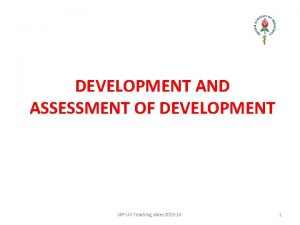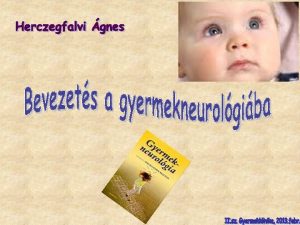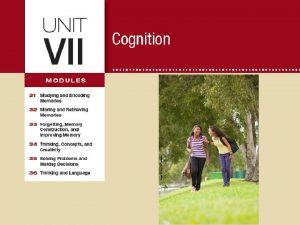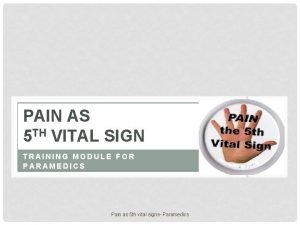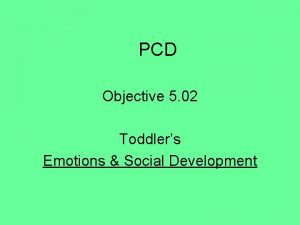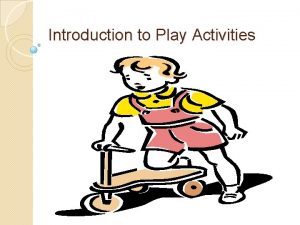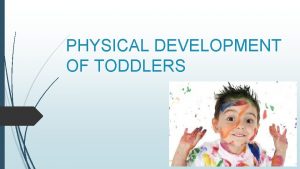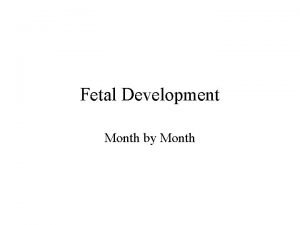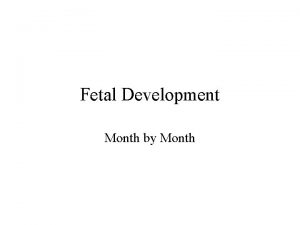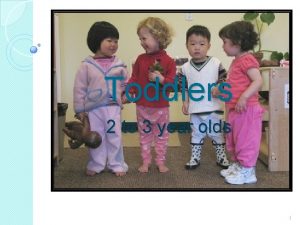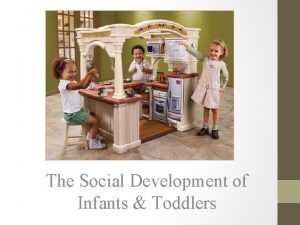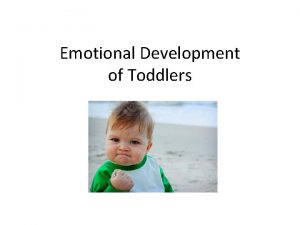Social Development of Toddlers 18 Month Old Toddlers










- Slides: 10

Social Development of Toddlers

18 Month Old Toddlers • At 18 months old, children begin developing independence from the family (day care, the playground, etc. ) • Up until this point, most infants and younger toddlers will engage in parallel play which is when children play near but not actually with another child

Two Year Old Toddlers • Two year olds still engage in parallel play but they also find it fun to have someone to play with • They are beginning to understand the concept of sharing or taking turns • Two year olds can also read people’s moods well and can modify their behavior based on what’s acceptable to different caregivers

Two and a Half Year old Toddlers • At this age, children are beginning to learn about the rights of others • They can respond to the idea of fairness, though at first, they are more concerned with what is fair to them • Social play is often still parallel and works best with only two children

Three Year Old Toddlers • Most 3 year olds are happy and agreeable • They will share or help in order to please someone • At 3 years old, children begin to play cooperatively or with each other • Although parents and siblings are important to 3 year olds, they also are beginning to enjoy the companionship of children their age

Three and a Half Year Old Toddlers • At this age, play is becoming more complex and includes more conversation • If conflict arises during play, 3 and ½ year old children can use several strategies to solve the problem • Children are also able to evaluate friendships and may begin to exclude others • Children are also likely to compare themselves to others at this age

Friends • Young children gradually learn to get along with other people, first in their own families and then in groups. This process is called socialization. • Generally, the more a child is exposed to other children, the easier it is for interact with other children and make friends • Children who have only adult companions often have difficulty interacting with children their own age

Imaginary Friends • Some children have the same imaginary friend for a long period of time, others have different friends and still others have imaginary animals • Imaginary friends are common among 3 and 4 year olds because of their active imaginations and interest in fantasies • An imaginary friend can be a helpful way for a child to experiment with different feelings • There is no need to be concerned about a child’s imaginary friend unless it continues into adolescence

Guidance Guidelines • 8 -12 months—inappropriate behavior can usually be controlled by distraction • 12 -15 months—distraction and physically removing the child from forbidden activities works best • 15 -24 months—children this age require distraction, removal and spoken restrictions • 2 -3 years—children at this age are better at responding to spoken commands and explanations • 3 -4 years—children this age like to please and be obedient in exchange for praise

Promoting Sharing • Young children often don’t understand the meaning of the word “share” and using the phrase “taking turns” may work better • The more children have to share the better they become at it • If the child has a particular attachment to a special object, it may be best to put that object away when around other children
